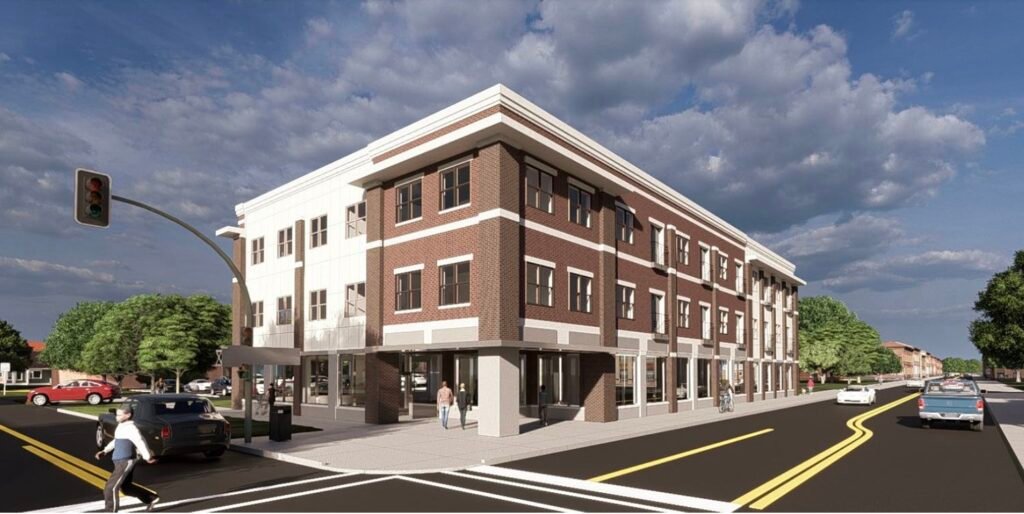
Mixed-use developments are revolutionizing the way we think about urban living, reshaping downtown areas into dynamic hubs that seamlessly blend residential, commercial, and recreational spaces. This approach to urban planning is addressing the evolving needs of modern communities, fostering economic growth, and enhancing the quality of life for residents and visitors alike. As cities grow denser and more complex, mixed-use developments are emerging as a sustainable and innovative solution to urban challenges. By integrating diverse functionalities within a single area, these developments create vibrant neighborhoods that attract people, businesses, and investment.
The resurgence of downtown areas through mixed-use projects is more than a trend; it’s a transformative movement. By combining apartments, offices, retail shops, restaurants, and cultural spaces, these developments foster a sense of community and convenience that aligns with the modern urban lifestyle. Mixed-use projects are not just revitalizing downtown districts; they’re redefining the way people interact with urban environments. This article explores the core elements of mixed-use developments, their benefits, and why they are reshaping the urban landscape.
What Are Mixed-Use Developments?
Mixed-use developments are real estate projects that combine two or more types of land uses, such as residential, commercial, office, and recreational, within a single property or neighborhood. These developments are strategically designed to create a self-sufficient ecosystem, minimizing the need for residents and visitors to travel long distances for work, leisure, or basic necessities.
Key Features of Mixed-Use Developments:
- Integration of Spaces: Mixed-use projects integrate diverse spaces to maximize land use and create a holistic living environment.
- Accessibility: These developments prioritize walkability and connectivity, often located near public transportation hubs.
- Sustainability: Incorporating green building practices and energy-efficient designs, mixed-use developments contribute to environmental sustainability.
- Community-Oriented Design: Public spaces like parks, plazas, and cultural venues encourage community interaction and engagement.
The Benefits of Mixed-Use Developments
Mixed-use developments offer a multitude of benefits that cater to individuals, businesses, and cities as a whole. Here are some of the most impactful advantages:
1. Economic Growth
Mixed-use developments drive economic vitality by attracting businesses, increasing property values, and boosting local tax revenues. Retail and dining establishments within these developments enjoy a built-in customer base, while residents benefit from job opportunities close to home.
2. Enhanced Quality of Life
Residents experience a more convenient and fulfilling lifestyle with access to essential services, entertainment, and leisure activities all within walking distance. This integrated living environment reduces stress and promotes well-being.
3. Reduced Traffic Congestion
By blending workspaces, homes, and amenities in one location, mixed-use developments decrease the reliance on cars, thereby reducing traffic congestion and commuting times. This also contributes to lower carbon emissions.
4. Revitalization of Urban Areas
Mixed-use projects are instrumental in revitalizing aging downtown districts. They transform underutilized spaces into vibrant neighborhoods, attracting new businesses, residents, and visitors.
5. Sustainability and Environmental Benefits
These developments promote sustainable urban living by reducing urban sprawl, conserving energy, and encouraging the use of public transportation.
Examples of Successful Mixed-Use Developments
Several cities around the world have embraced mixed-use developments, showcasing their potential to transform urban areas:
1. Hudson Yards, New York City
Hudson Yards is a prime example of a large-scale mixed-use development that integrates luxury residences, office spaces, retail stores, and cultural venues. This $25 billion project has become a vibrant community within Manhattan, attracting residents, tourists, and businesses.
2. The Grove, Los Angeles
The Grove blends retail, dining, entertainment, and residential spaces, creating a lively destination for locals and visitors. Its pedestrian-friendly design and integration of public spaces exemplify the principles of mixed-use development.
3. Canary Wharf, London
Originally a commercial hub, Canary Wharf has evolved into a mixed-use district with residential towers, shopping centers, and recreational facilities. This transformation has revitalized the area, making it a desirable place to live and work.
Challenges and Considerations
While mixed-use developments offer numerous advantages, they also present challenges that developers and city planners must address:
- Zoning Regulations: Navigating zoning laws and obtaining permits can be complex and time-consuming.
- High Initial Costs: The construction and design of mixed-use projects require significant investment, which can deter smaller developers.
- Community Resistance: Existing residents may resist mixed-use projects due to concerns about increased traffic, noise, or changes to neighborhood character.
- Balancing Uses: Ensuring an optimal mix of residential, commercial, and recreational spaces is crucial for the project’s success.
Future Trends in Mixed-Use Developments
The future of mixed-use developments is being shaped by technological advancements, changing consumer preferences, and a greater emphasis on sustainability. Here are some emerging trends:
- Smart Cities Integration: Mixed-use projects are increasingly incorporating smart technologies, such as IoT-enabled infrastructure, to enhance efficiency and connectivity.
- Focus on Wellness: Developments are prioritizing health and wellness by including features like green spaces, fitness centers, and wellness clinics.
- Adaptable Spaces: Flexible designs that can accommodate evolving needs, such as co-working spaces and multi-purpose venues, are gaining popularity.
- Eco-Friendly Designs: Renewable energy sources, green roofs, and water conservation systems are becoming standard features in mixed-use projects.
Conclusion
Mixed-use developments are reshaping downtown areas by creating vibrant, self-sustaining communities that blend residential, commercial, and recreational spaces. This innovative approach to urban planning addresses key challenges such as traffic congestion, urban sprawl, and economic stagnation, while enhancing the quality of life for residents and visitors.
The transformative power of mixed-use developments lies in their ability to breathe new life into urban areas, fostering economic growth and social interaction. From iconic projects like Hudson Yards in New York City to community-focused neighborhoods around the globe, these developments demonstrate the potential to redefine urban living.
As cities continue to evolve, mixed-use developments will play a pivotal role in shaping sustainable, connected, and thriving downtown areas. For developers, city planners, and residents, embracing this approach is not just an opportunity—it’s a necessity for building resilient and future-ready communities.






